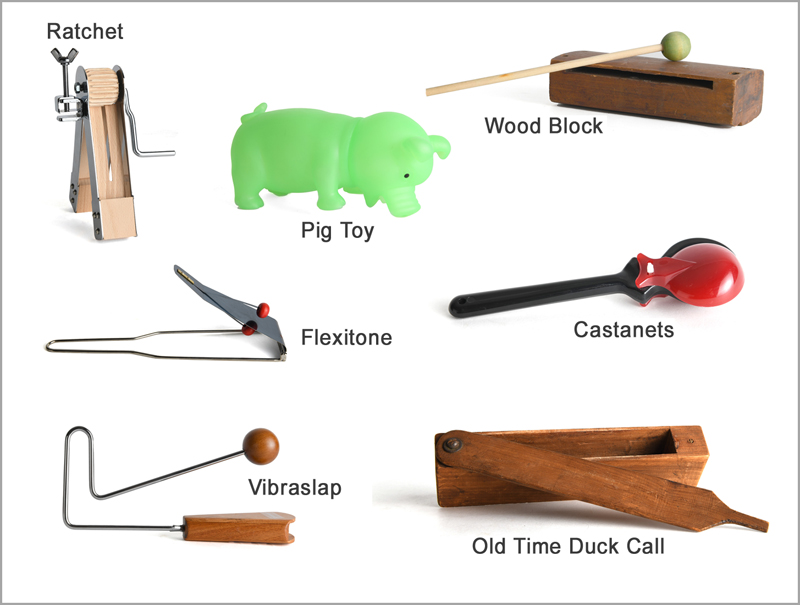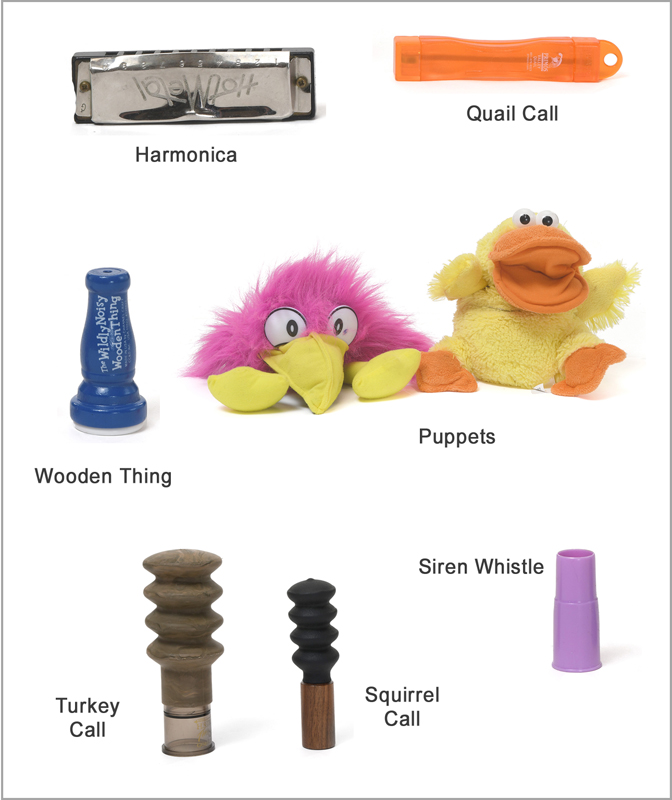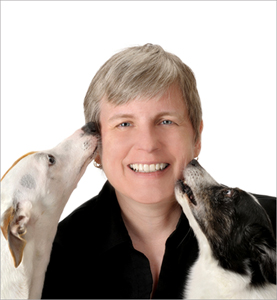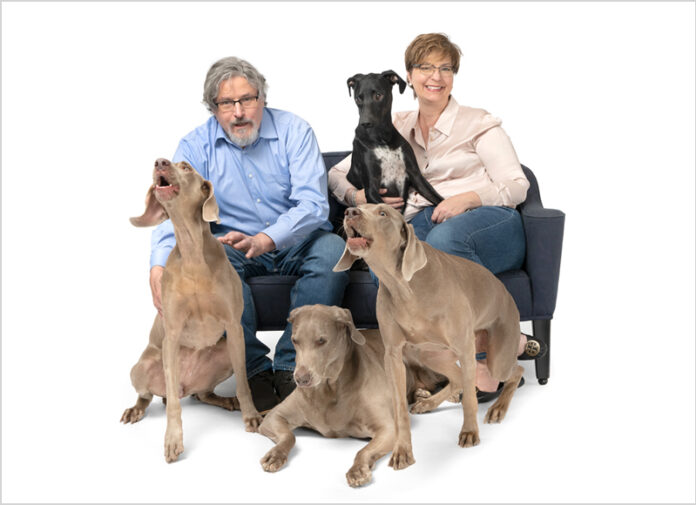By Margaret Bryant
This is my 25th year as a dog photographer and I am always on a quest to find new ways to get a dog’s attention. One mistake you don’t want to make is to use a noise-maker that might elicit an undesired response like the image above. I call it “Ding Dong” because I failed to ask the owners what their dogs do whenever the doorbell rings!
Before you say, “I don’t photograph dogs,” consider the high school seniors who bring their dogs to a session or the families who aren’t about to exclude that most important part of the family or think about how difficult it is to get the attention of small children or babies in those family portraits. So, even if you aren’t a pet photographer, there will be times when noise-makers will be a useful part of a photo session.
A few years ago, I wrote another article for this magazine titled “Ears To You!” which also talked about getting a dog’s attention. Since that time, I’ve learned some new things and thought it might be a good idea to share them. But, before we get started, here are a few reminders. First, squeakers don’t always work (sorry to have to tell you that). Secondly, only one person at a time should be getting the dog’s attention. Don’t try to confuse the dog by using more than one person at a time. After all, that person with the big black thing in front of their face is weird enough in the eyes of a dog!

Also, whatever gets the dog’s attention might only work once, so don’t keep using it when it no longer works. Trust me, the dog is not going to miraculously change its mind and think, “Oh, maybe I will smile this time.” Talk to the dog’s owner during the consultation to see what kinds of things they use to get the dog’s attention. You might be surprised.
Once you find something that works, vary the volume of the noise-maker. When one item fails to get a response, quickly change to another so you don’t lose momentum.
Over the years, I’ve gotten more creative with using what is around me such as doorbells (ha!), squeaky doors, knocking on windows and doors, stamping feet, noises with your mouth, dropping things, and scratching the side of the soft box with your fingernails. You get the idea. Use your imagination with what is around you.
Since COVID, I tend to not use many noise-makers that go into my mouth. I still use harmonicas, siren whistles, and one hunter’s animal call (quail call), but that’s it for mouth devices. In the past, the dog owners or others might have helped and used the hunter’s calls that needed two hands. But even with disinfecting them regularly, I still worry they might be problematic. As a result, I try to be the only one who handles noise-makers, and I try to use the ones that require only one hand since my camera is in the other hand.
Two of the non-mouth hunter’s calls I regularly use are a turkey call and a squirrel call. Neither requires my mouth or two hands. Just shake them. Both get good reactions from the dogs and the squirrel call works especially well.
Specific words and phrases still work. “Want to go fishing?” is not a phrase I would have guessed would get a reaction from a dog. Yet it has worked for several dogs. Ask the owner for words or phrases the dog might react to and have the owner use them because the dog is familiar with their owner’s voice.
Just remember, owners might think they can follow your directions but, most of the time, they can’t. I usually tell them to wait until I am ready and then I tell them to do it (knock on a door, for example). More often than not, this is followed by an unexpected pause… silence. “Oh, you mean now?” (sigh) I tell them to only do the action once or twice and no more because quick repetition makes the action less effective. I’ve had owners knock repeatedly, even when I don’t have the camera up to my face.
So, don’t expect the attention-getting process to go as planned when you involve the owners. But to be fair, I have sometimes had other photographers try their hand at making noises, and they have problems as well. It’s apparently a skill that is more difficult than it looks!
Children’s toys can work well. Puppets can be especially good. Dogs with prey drive will instantly be interested in the puppet and if the puppet makes noise, all the better! I have found puppets at photography conventions. Other children’s toys can be found in some of the most unlikely places.
I found a green plastic pig that “oinks” when you squeeze it in a shop where I had gone to get ice cream at their old fashioned soda fountain. Who knew? I also find good things at estate sales. Keep your eyes open, you never know where you will find good attention-getters.

I have long used apps on my phone or tablet to get a dog’s attention. An app with dogs whining is particularly good and almost always works! Also, I have found children’s toys with buttons to give a variety of animal noises to be useful. Look for toys that introduce young children to animals and the sounds the animals make.
Here are some other ideas. If the dog is particularly bonded to the owner, you can have the owner walk behind you, the photographer, and the dog’s head might follow. If the dog is ball crazy try having someone bounce a ball near you, and fake a ball toss to the dog. Cat feather toys work with some dogs, especially tickling their noses if they are blind and/or deaf.
Lately, I have been exploring percussion musical instruments. I played percussion in high school band and I have found more weird instruments than I ever knew existed. The jury is still out on how well they work in getting a dog’s attention, but I think they are worth a try. Remember, the goal is to find noises a dog has never heard before. I am trying a wood block (they are hollow), a ratchet, a Flexitone, castanets, and a Vibraslap. You can find videos online to hear what they sound like.
The one trick I use to get the attention of a dog when nothing else works is “the fake food toss.” Assume for the moment that the dog is food motivated. The person doing the “toss” needs to show the dog they have food. Let the dog sniff, but not take the food. The person then stands next to you, the photographer. When you are ready, the person pretends to throw the food, but doesn’t actually throw it. The dog usually closes their mouth and has an alert expression on their face. There is a technique to the toss. It needs to look like a real toss. This may not work more than once and it is a last resort, but it can be great when it works!
Watch out for things that may attract a dog’s attention when you don’t want them to and become a distraction. Certainly the owners talking between themselves within earshot of the dog can be a distraction. Sometimes you can use this to your advantage by having the owners talk only when you want them to. This can work well as the dog gets an alert look on their face trying to listen for words like “treat”! On the other hand, sometimes you have to ask the owners to temporarily leave because the distraction is too great.
Other dogs can be a distraction. It can be a strange dog walking by your studio window or another dog in the family. I have used this negative as a positive too. I used to have someone bring out my little dog, Molly, in their arms to get a dog’s attention. She was a stranger to the dog I was photographing and curiosity took over.
Before the photo session, sometimes a dog will find my noisemaker stash and pick out a ”toy.” Again, turn this into an advantage because you now know what interests the dog. Be flexible and try to turn a distraction into a positive.
There are many, many ways to get a dog’s attention. The search can be so much fun and is only limited by your imagination!
 Margaret Bryant is an award-winning photographer who specializes in photographing dogs and their people. Her style is simple, original and authentic and often shows the humor and whimsy of dogs. Starting her business in 1998, Margaret has specialized in dogs and their humans from the very start.
Margaret Bryant is an award-winning photographer who specializes in photographing dogs and their people. Her style is simple, original and authentic and often shows the humor and whimsy of dogs. Starting her business in 1998, Margaret has specialized in dogs and their humans from the very start.











